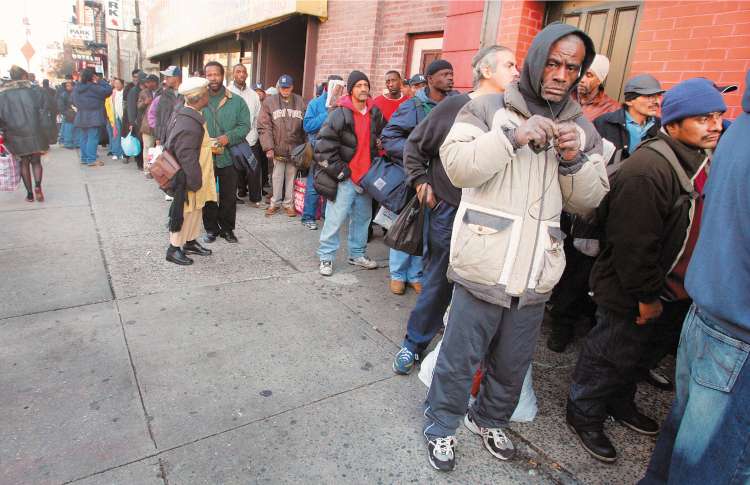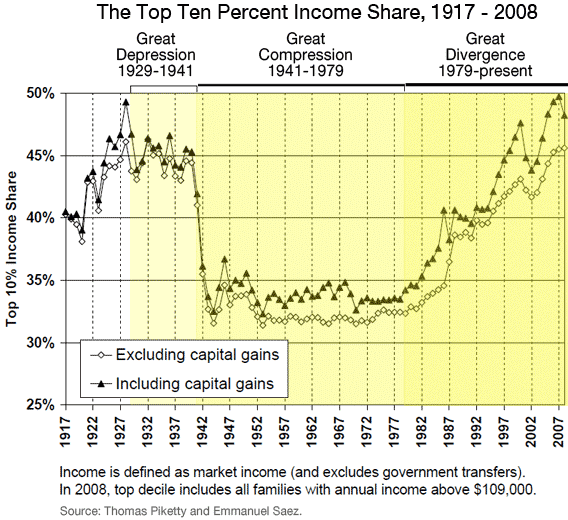 Develop Economies often waxes philosophic from his armchair in Africa about China’s role in the development of the continent. For some, the China love-fest is rooted in the fact that bilateral trade is not patronizing, unlike aid. For others, China is a ruthless competitor – a less explicit colonialist than the Europeans. In this journal, Develop Economies tries to remain neutral, presenting the facts. But, in recent months, he has given a disproportionate amount of airtime to the views of the former group. So it is timely that Yuriko Koike, Japan’s former minister of defense and national security adviser, has a none-too-kind piece in Project Syndicate titled “China’s Africa Mischief.”
Develop Economies often waxes philosophic from his armchair in Africa about China’s role in the development of the continent. For some, the China love-fest is rooted in the fact that bilateral trade is not patronizing, unlike aid. For others, China is a ruthless competitor – a less explicit colonialist than the Europeans. In this journal, Develop Economies tries to remain neutral, presenting the facts. But, in recent months, he has given a disproportionate amount of airtime to the views of the former group. So it is timely that Yuriko Koike, Japan’s former minister of defense and national security adviser, has a none-too-kind piece in Project Syndicate titled “China’s Africa Mischief.”

From 2006
In discussing China’s last-minute, $200 million arms deal to former Libyan president Muammar Gadaffi, Koike explains how China has played its cards:
But, in recent years, China became an obstacle to Qaddafi’s African ambitions, and China did so by copying his methods: buying the support of dictators with weaponry and finance. Since 2000, China has actively courted Africa’s unstable and dictatorial countries with offers of aid and a refusal to back United Nations sanctions against them. Indeed, China has blithely entered into business with African countries that Europe and America refuse to engage with, owing to sanctions.
International sanctions, it now seems, were the door through which China rushed to gain access to Africa’s mineral wealth for its voracious industries. For example, instead of making an effort to foster peace in Sudan, as a permanent, veto-wielding member of the UN Security Council should, China’s deep involvement with Sudan, through the provision of oil infrastructure and weapons, actually prolonged the Darfur conflict. A letter to Chinese officials, signed by many members of the US Congress, and a report by Amnesty International state that China exported weapons to Sudan in violation of UN resolutions. The Oscar-winning film director Steven Spielberg embarrassed China by resigning from an advisory post for the 2008 Beijing Olympics because of its support for the government in Khartoum, calling the Chinese games the “genocide Olympics.”
It is hard (actually, impossible) to deny that China has been unscrupulous in its dealings with kleptocrats and dictators in Africa. But, by its own admission, China explicitly maintains a “no questions asked” policy when it comes to the scramble for resources. A few things come to mind, however, when thinking about China’s role in arming Africa’s “forever wars.”

Viktor Bout doing what he does
Today, Charles Taylor is on trial at the Hague. The ex-Russian military man who sold him the weapons – Viktor Bout – is currently sitting in a prison cell in Thailand, fighting extradition to face charges to in unleashing hell on Liberia, Sierra Leone, and countless other countries. The film “Lord of War” chronicles Bout’s escapades in the continent. These men are criminals of the worst kind – men whose actions, either directly or indirectly, led to unspeakable horrors. Now they are in court, where they belong. And Gaddafi, the jheri-curled tyrant who threatened to “show no mercy” to the residents of Benghazi, isn’t far behind (he’s hiding in Algeria, as a matter of fact). His onslaught against the people of Libya, as it turns out, might not have been possible had it not been for the subtle, behind-the-scenes deals cut with three major Chinese weapons manufacturers. The Canadian paper, The Globe and Mail, in a move that proves its host country is more than America’s top-hat when it comes to journalism, broke the story:
China offered huge stockpiles of weapons to Colonel Moammar Gadhafi during the final months of his regime, according to papers that describe secret talks about shipments via Algeria and South Africa. Documents obtained by The Globe and Mail show that state-controlled Chinese arms manufacturers were prepared to sell weapons and ammunition worth at least $200-million to the embattled Col. Gadhafi in late July, a violation of United Nations sanctions.
If China is supplying arms to a violent dictator – “in flagrant violation of the arms embargo instituted under UN Security Council Resolution 1970, which China approved” – then why is it not also treated as a criminal entity? That is a rhetorical question. It is a sovereign state and is technically free to do what it wants, particularly since the United States is bogged down in its own mess and Europe is on the brink of economic implosion. Not to mention, the West has not exactly been a model citizen when it comes to its dealings with Africa. China is the number two buyer of oil from Angola. The United States is number one. This leads me to my next point. The roots of geopolitical conflict can always be traced to oil. Always. From the Globe and Mail article:
The documents suggest that Beijing and other governments may have played a double game in the Libyan war, claiming neutrality but covertly helping the dictator. The papers do not confirm whether any military assistance was delivered, but senior leaders of the new transitional government in Tripoli say the documents reinforce their suspicions about the recent actions of China, Algeria and South Africa. Those countries may now suffer a disadvantage as Libya’s new rulers divide the spoils from their vast energy resources, and select foreign firms for the country’s reconstruction.
And Project Syndicate:
China has chosen a high-risk path – ignoring human rights and violating UN sanctions – to secure the energy and other resources needed to sustain its economy’s rapid growth. It is a choice that neither befits one of the permanent members of the Security Council, nor demonstrates China’s readiness to be a responsible stakeholder in the international community. China’s willingness to arm and defend African dictators, even in the teeth of UN sanctions, as in Libya, undermines its claim to a “peaceful rise.” Given China’s Libyan duplicity, the world should now determine whether it is a country that obeys international rules only when doing so suits its interests.
This principle, of course, is not limited to the countries of the Far East. One need not look further than the tiny country of Equatorial Guinea, where the per capital GDP is around $10,000 USD, yet more than half the population lives in poverty. Here is how Ken Silverstein describes the situation:
The United States historically had little interest in Equatorial Guinea and closed its embassy there in 1995 after the Obiang regime issued threats against Ambassador John Bennett, who had lodged protests over human rights conditions. But in an unfortunate twist, American companies soon discovered vast reserves of oil and gas in the waters off Equatorial Guinea, and successive U.S. governments have been slowly but steadily backtracking ever since. The key step came in 2003, when after an intense lobbying campaign by the oil industry, Bush approved the reopening of the U.S. Embassy in Malabo, Equatorial Guinea’s capital. (The embassy formally reopened three years later.) “With the increased U.S. investment presence, relations between the U.S. and the Government of Equatorial Guinea have been characterized as positive and constructive,” notes the State Department’s country profile.
Relations may be good, but the official U.S. assessment of the country is much less rosy. The State Department’s most recent global human rights reportcited abuses in Equatorial Guinea including “torture of detainees and prisoners by security forces; life-threatening conditions in prisons [and] arbitrary arrest.” Freedom House’s 2011 “Freedom in the World” survey put the country in its “worst of the worst” category for governments that violate political rights and civil liberties, along with North Korea, Sudan, and Turkmenistan. Equatorial Guinea’s economy depends almost entirely on oil, which generated revenues last year of well over $4 billion, giving it a per capita annual income of $37,900, on par with Belgium. “The oil has been for us like the manna that the Jews ate in the desert,” Obiang has said. It certainly has been for him. Obiang placed eighth on a 2006 list by Forbes of the world’s richest leaders, with a personal fortune estimated at $600 million. His population hasn’t fared so well. Human Rights Watch reports that one in three of Obiang’s impoverished subjects dies before age 40.
Silverstein’s article is worth reading in full. Whenever I write about the role of oil in the world’s conflicts, I feel like the Charlton Heston in Soylent Green – “It’s people!” Stories like these, however, lead me to believe I am at least somewhat correct in my assumptions. And I guess China isn’t so honest about it after all.
Develop Economies’ Music Recommendation:
 The New York Times
The New York Times  1. Causality
1. Causality
 I could go on, but it is not worth it. I have been reading politics for the better part of the last five years. I am not that old, and I understand that every generation thinks its political situation is worse than the ones that preceded it. But I swear – the discourse was never like this. Ronald Reagan, the hero of the National Review raised taxes 11 times during his presidency and supported amnesty for illegal immigrants who had laid roots in this country. It is absolutely amazing to me that people like this are even given the time of day when they posit arguments like this. The party of Ms. MacDonald has flown off the handle. But she is a symptom of a much larger, more nefarious problem with the political discourse in this country. The fact remains that the
I could go on, but it is not worth it. I have been reading politics for the better part of the last five years. I am not that old, and I understand that every generation thinks its political situation is worse than the ones that preceded it. But I swear – the discourse was never like this. Ronald Reagan, the hero of the National Review raised taxes 11 times during his presidency and supported amnesty for illegal immigrants who had laid roots in this country. It is absolutely amazing to me that people like this are even given the time of day when they posit arguments like this. The party of Ms. MacDonald has flown off the handle. But she is a symptom of a much larger, more nefarious problem with the political discourse in this country. The fact remains that the 

